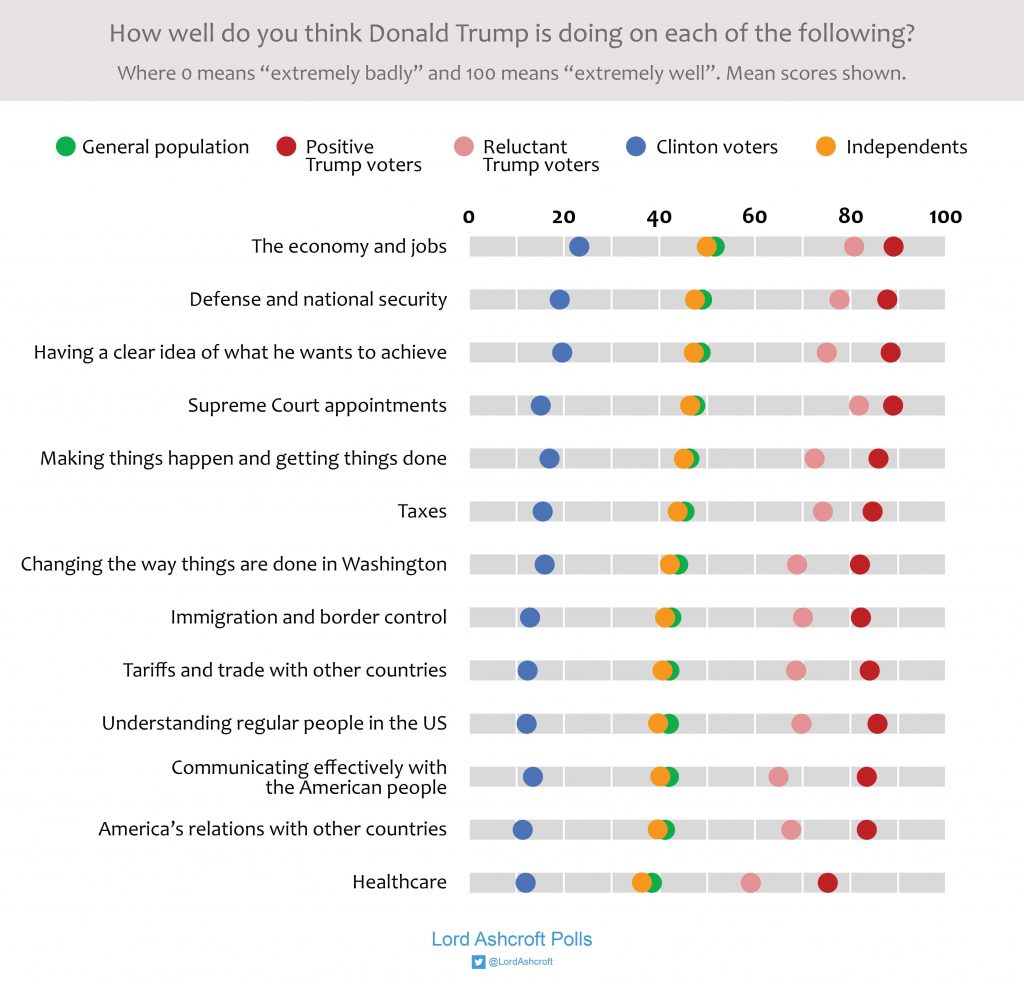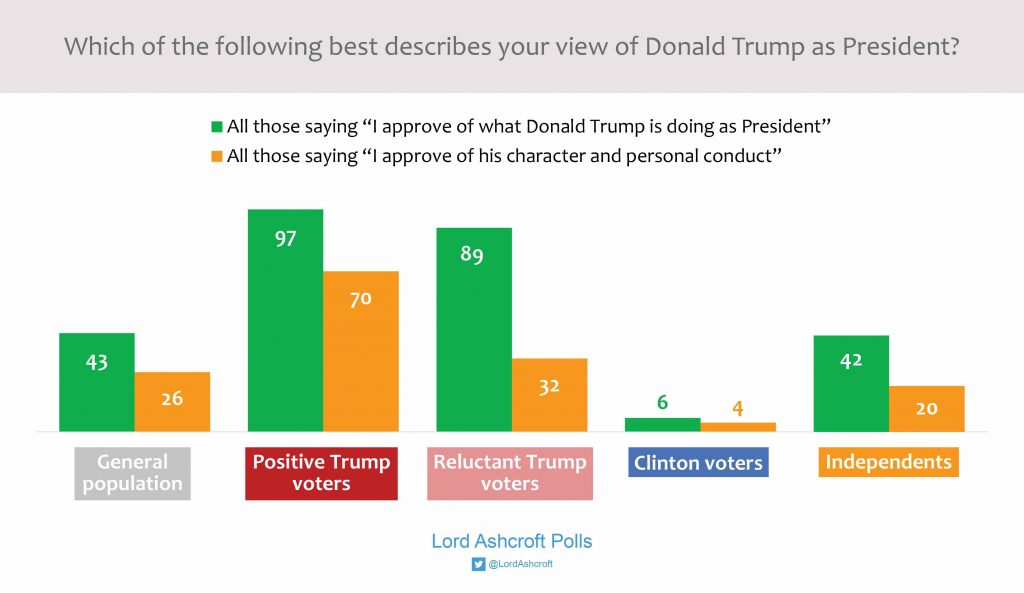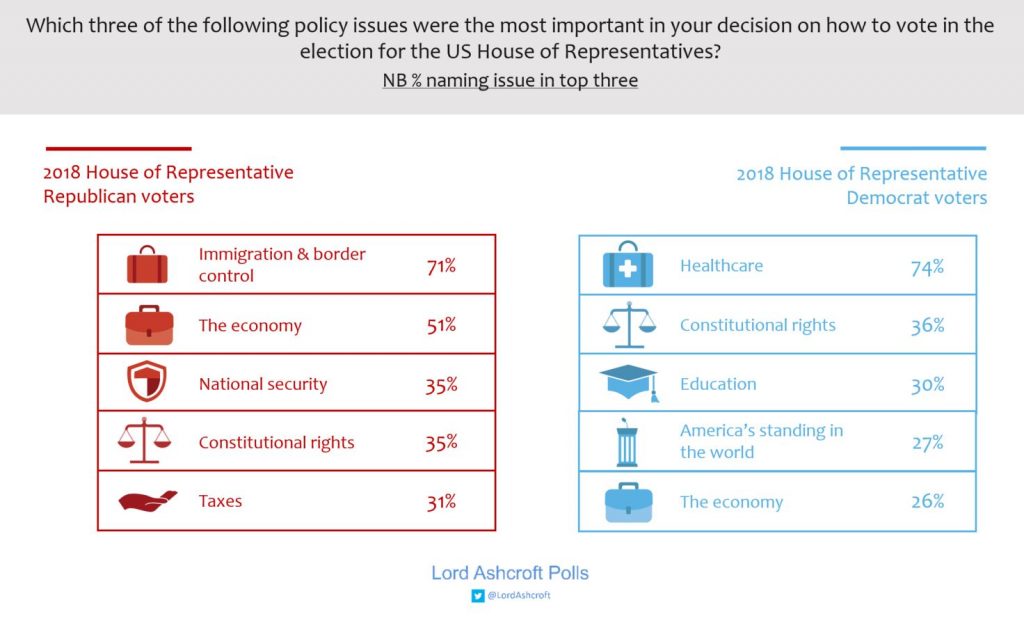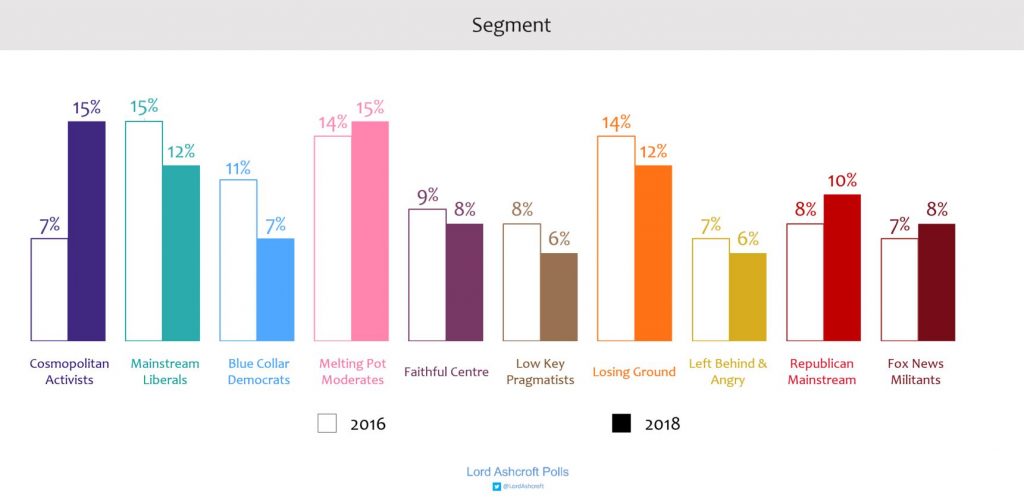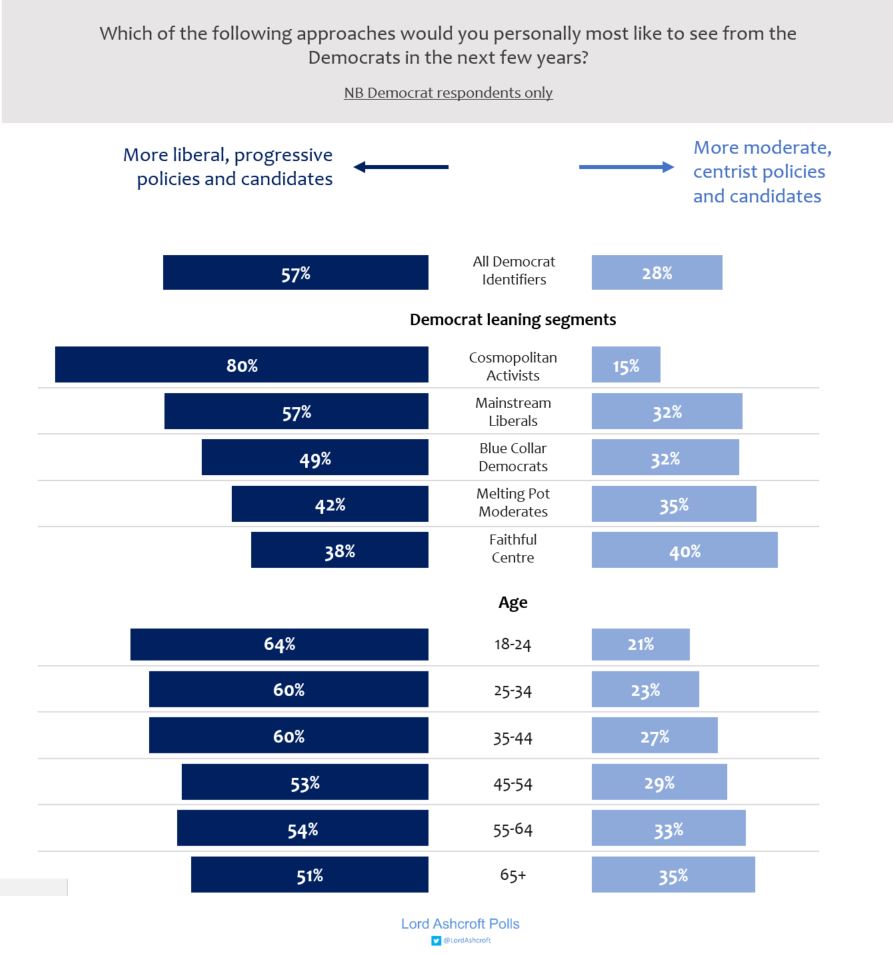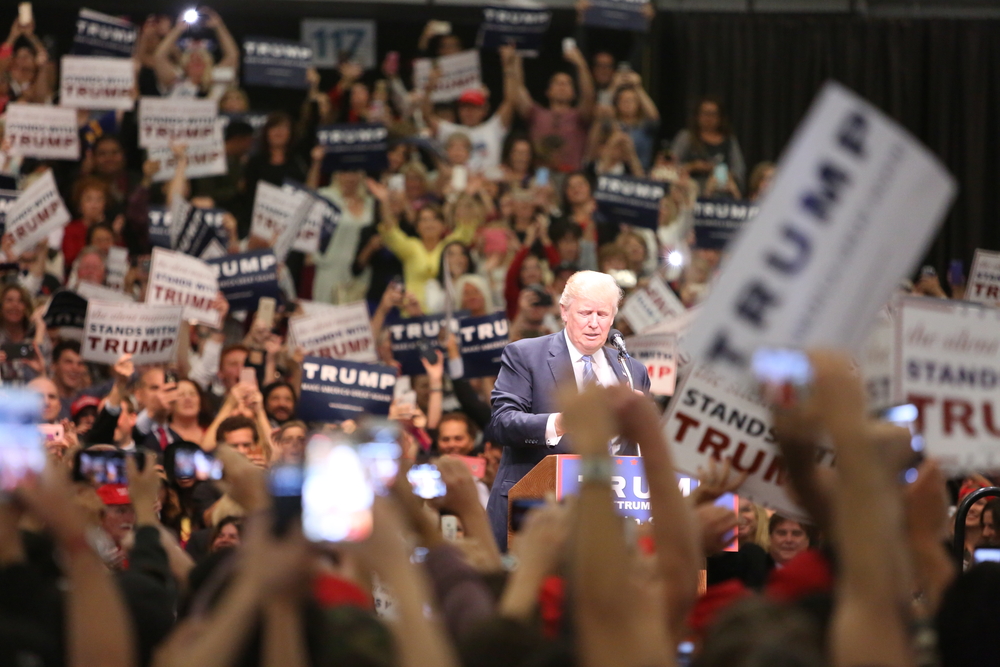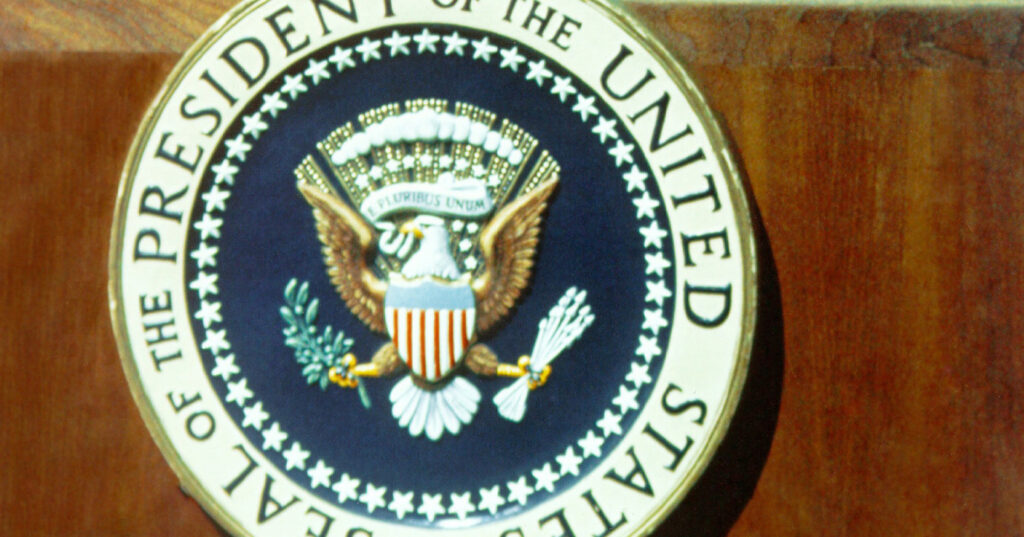
Yesterday was the second anniversary of Donald Trump’s inauguration as President. Other things being equal, the next such ceremony will take place on 20 January 2021. In other words, we are now into the second half of Trump’s term – or should that be his current term? Since the 2016 election campaign, my Ashcroft in America project has helped explain how Donald Trump came to be elected, the hopes and fears of his supporters and opponents, and what they make of the unfolding story of his presidency and its seemingly endless controversies.
My new book, Half-Time! American Public Opinion Midway Through Trump’s (First?) Term – and the Race to 2020 brings together two years of research with new polling conducted since last November’s midterms to explore how different parts of the electorate see the President and his agenda, and how they are lining up for next year’s showdown. Here are five of the big points.
-
Trump’s supporters are (mostly) still with him
Those who voted for President Trump give him high marks on most issues and overwhelmingly say they approve of his overall performance. They largely give him the credit for America’s recent economic success, citing his tax cuts and rolling back of regulations. They also strongly approve of his appointment of two conservative judges to the Supreme Court – a particularly important point for Republican voters who had their doubts about Trump at the election. His tough line on immigration, which they closely associate with national security, has also gone down well with the base, as has his willingness to take on international partners over trade deals and defence spending, and his continued determination to say exactly what he thinks.
But this is not uniform across the board – those who chose Trump as the lesser of two evils, or switched to him having previously backed Barack Obama, give him lower (though still positive) scores compared to those who were enthusiasts from the outset. They are more open than Trump voters in general to be willing to consider an alternative at the next election.
-
Many separate his personal behaviour from what he does as President
That is not to say Trump’s voters like everything about him. Many are doubtful about his personal ethics, and want him to be a bit more presidential, cut out the name-calling and generally calm down, especially on Twitter. But even his more reluctant voters generally like what he is doing as President, even though fewer approve of his character. Whatever their qualms on this score, they decided at the election that other things mattered more, and this still holds true. Many of the criticisms of Trump have focused on his conduct, but his voters are more focused on delivery. As a woman in Iowa told us shortly before the midterm elections: “It’s like the CEO of the company I work for. I don’t care if you’re the nicest guy in the world. I care that we’re going to be successful and I’m going to have a job from day to day.”
-
We can expect to hear a lot more about immigration and healthcare
During the 2016 campaign we asked Americans about their greatest fears. Republicans’ biggest worry was the immigration system letting in individuals who would threaten their community. For Democrats, and for voters overall, it was being unable to pay for treatment if they or their family were to have a serious illness. Two years later, these two issues topped the list when we asked about the most important issues in the midterm elections.
As of today, the federal government remains shut down because of the continuing standoff between Trump and the Congressional Democrats over funding for a Mexican border wall. Trump continues to invoke the migrant caravan making its way north towards the frontier. The most committed Republicans have the most negative views about the effects of immigration, and Democrats regard the now-abandoned policy of separating the children of illegal immigrants (which made even some Trump supporters uneasy) as among the most deplorable aspects of the Trump presidency. Meanwhile, the controversy over healthcare has not gone away since the administration’s failure to push reform through Congress, and Democrats are not alone in worrying about it: Republicans too raise it as a concern and most want to keep the requirement for insurers to cover pre-existing conditions. The two issues look set to play a big part in the next two years and the 2020 campaign itself.
The investigation into alleged collusion between Russia and the Trump campaign – potentially the most explosive of all, and which could in theory detonate his presidency – is not one that actually moves many votes: whether you think Trump is bang to rights or the probe is a politically motivated witch hunt essentially depends on whether you voted for him in the first place.
-
The electorate is shifting – especially on the left
In the run-up to the 2016 election we asked 30,000 Americans about their background, ethnicity, education, work, religion, level of political interest and sources of news – among other things – as well as their attitudes to social and cultural issues. We analysed the results to identify ten distinct segments within the electorate, which fell into four clusters: the Democrat Core, Centrist Voters, Republican Partisans, and a more disengaged but dissatisfied group we called the Trump Targets.
In a similar study two years on, we find some small declines in the centrist and disengaged groups and a minor uptick in the Republican-supporting segments. But the biggest change has been on the left. As before, a third of the population falls into one of the three segments of the Democrat Core – but while two of these groups (the Mainstream Liberals and more working class and socially conservative Blue-Collar Democrats) have shrunk, the most left-leaning segment has doubled in size. This shift is a telling part of the movement’s response to the Trump presidency. We have heard focus group participants explain how they once considered themselves moderates but have felt themselves driven leftwards in reaction to his words and deeds. We can also see changes in their broader political outlook. In the most liberal groups we can see dramatic falls over the last two years in the numbers thinking life in America is better than it was 30 years ago, that life for today’s American children will be better than it was for their parents, and that it is possible to succeed in America whatever your background.
-
His opponents’ reaction to him could work to Trump’s advantage
Not surprisingly, asked what kind of candidate they would like to see take on Trump in 2020, Cosmopolitan Activists prefer the idea of a progressive liberal to a moderate centrist by a huge majority – bigger than that among Democrats more generally, let alone uncommitted voters in the middle. People most likely to be in play on the other side – Obama-Trump voters, lesser-of-two evils Trump voters who couldn’t stand the idea of President Hillary Clinton, and moderate Republicans open to an alternative to the incumbent – seem unlikely to flock to such an individual.
But as well as being the furthest to the left on the political spectrum, the young, educated and affluent Cosmopolitan Activists are also by far the most likely of all the segments of the electorate to donate to campaigns, work for candidates, attend political events and, crucially, vote in the Democratic primaries. Will their horror at President Trump and all his works drive them to choose the candidate most likely to hand a second term to their nemesis?
